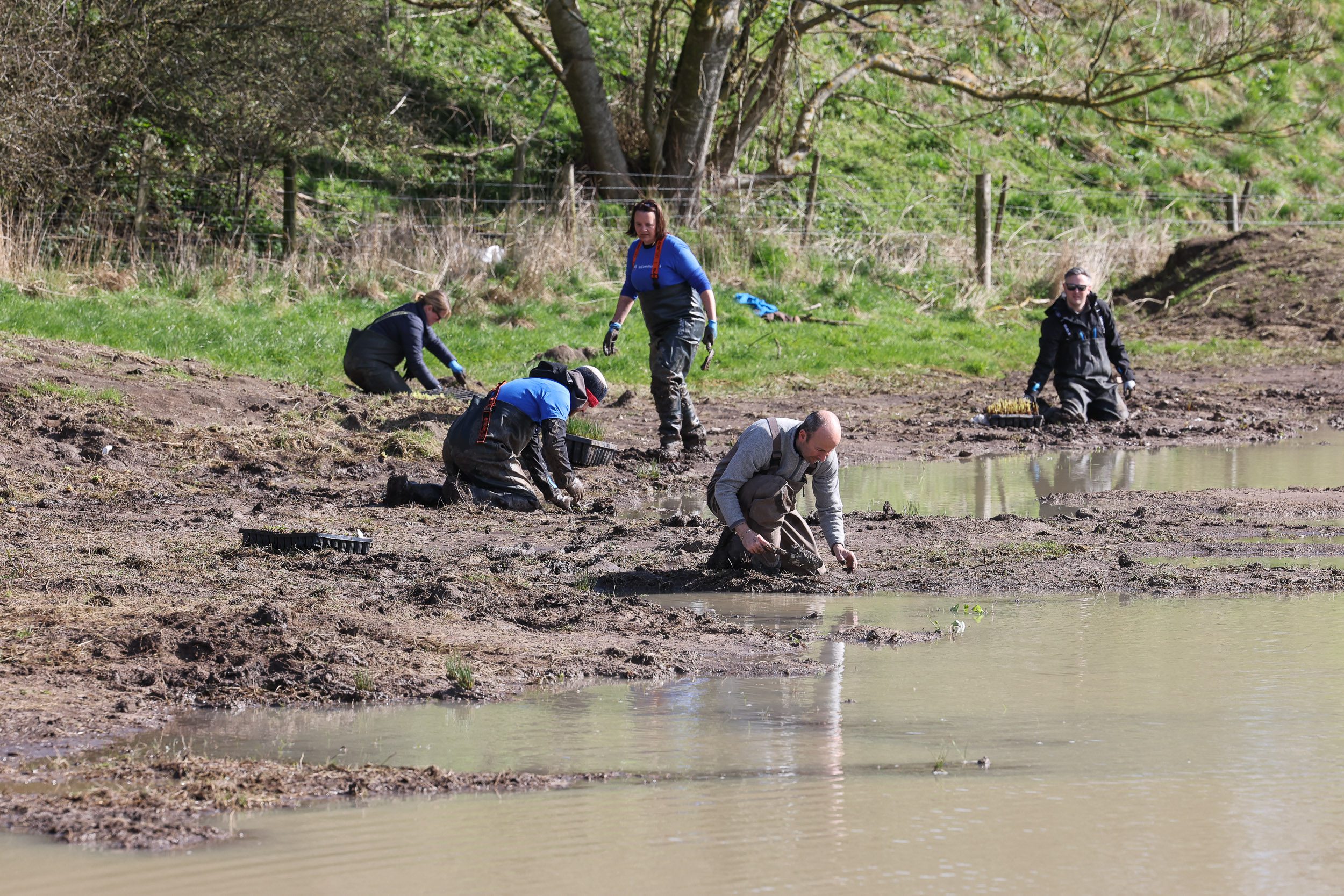

In a tie-in with World Water Day in late March, employees from Amazon Web Services (AWS), The Rivers Trust and Action for the River Kennet (ARK) have put on their waders and planted 11,000 native plants at two newly created wetlands in Fyfield and Wilton, Wiltshire. The wetlands will recharge nearly 600 million litres of groundwater per year and improve water quality by receiving and treating polluted runoff from farms and roadways. The project will help address growing water scarcity and water quality in the Thames River basin.
The Rivers Trust, ARK and AWS employees planted a mixture of oxygenating, floating, marginal and marsh plants such as marsh marigold and water mint. These plants play an important role in storing and cleaning water and restoring biodiversity. In Fyfield, 5,000 plants have been planted over an area of 1,000m2, whilst in Wilton, 6,000 plants over an area of 1,200m2.
Charlotte Hitchmough, Director at Action for the River Kennet said, “We can only hope to enjoy lovely flowing rivers if we have clean water draining into them and these projects are critical to achieving that goal in the Kennet catchment.”
Will Hewes, Water Sustainability Lead at AWS, added, “Nature-based solutions such as these wetlands can fundamentally change how we address water challenges.”
“Planting these wetlands is part of our water positive commitment to return more water to the environment than we use by 2030, and we’re looking forward to seeing them grow and develop over years.”
The two wetlands will provide long-lasting and effective benefits to surrounding villages within the North Wessex Downs Area of Natural Beauty, as wetlands help to retain rainwater and so mitigate climate issues such as flooding. They also offer a green space for both locals and wildlife to enjoy. Both wetlands will be completed by the end of 2023.
Water scarcity is posing an imminent problem to communities surrounding the Thames and these examples of green infrastructure are just two of many being implemented to support rivers and other water bodies.








